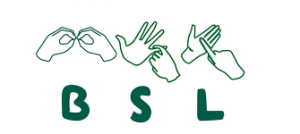One of our very concerned hospital customer called in this morning. They have a consultant’s appointment for a newly registered patient, a native English hence does not require an interpreter in any of the 189 languages we provide. However she is deaf and hence would not hear and respond to the medical staff. We have booked a BSL interpreter for them. Dr Fred has asked us to produce some basic introduction on BSL to be published to their staff. Here it is for the benifit for our other users too.

The following will increase your working knowledge of BSL
Also called British Sign Language is a sign language used in the United Kingdom. It is the first or preferred language among the Deaf community and is now recognised as one of the four indigenous languages in the British Isles. The language has its own grammar and syntax, very different from the grammatical rules of English. BSL uses both manual and non-manual components: hand shapes and movements, facial expression and body movements.
Thomas Braidwood, a teacher from Edinburgh, founded ‘Braidwood’s Academy for the Deaf and Dumb’ in 1760. It is the first school for deaf children in Britain.[15] The school primarily taught oral communication method.
Who uses BSL?
It is used mainly by people who are Deaf or to support those who have a hearing loss.
Can BSL users read English?
It is impossible for monolingual BSL users to comprehend English fully. They must have information in their own language. The new law ensures this for NHS patients. However until BSL is granted ‘legal status’ it won’t happen in other public institutions, where the bench mark is always set in English
Why don’t deaf people use subtitles?
It’s much easier for sign language users to keep track of who is speaking with a qualified interpreter, who will also take on aspects of the character that they’re conveying. And unlike sign language interpretation, subtitles rarely indicate sound effects or music.
Why can’t a deaf person speak?
MYTH: All deaf people are mute. FACT: Some deaf people speak very well and clearly; others do not because their hearing loss prevented them from learning spoken language. Deafness usually has little effect on the vocal chords, and very few deaf people are truly mute.
BSL has many regional dialects.
Certain signs used in Scotland, may not be understood immediately, or not understood at all, by those in Southern England, and vice versa. Some signs are even more local, occurring only in certain towns or cities (such as the Manchester system of number signs). Likewise, some may go in or out of fashion, or evolve over time, just as terms in oral languages do.[38] Families may have signs unique to them to accommodate for certain situations or to describe an object that may otherwise require fingerspelling.
In 2016, official statistics say that there are 151,000 people who use BSL in the UK, and 87,000 of these are deaf. This figure does not include professional BSL users, interpreters, translators, etc. unless they use BSL at home.[45]
What is the BSL Act 2022?
The British Sign Language Act 2022 recognises BSL as an official language of England, Scotland and Wales – the same status afforded to Welsh and Scots Gaelic. Under the new law, the government must promote BSL and make it easier for people to use it in their dealings with government agencies.
How many BSL interpreters do you need?
For meetings and events longer than two hours, two interpreters are necessary. They can co-work with each other and take turns to interpret. For a BSL user, watching an interpreter for a long period of time can also be very tiring.
Language Direct provide BSL interpreters in person and over video too.
You may use this form to book your BSL interpreter.
